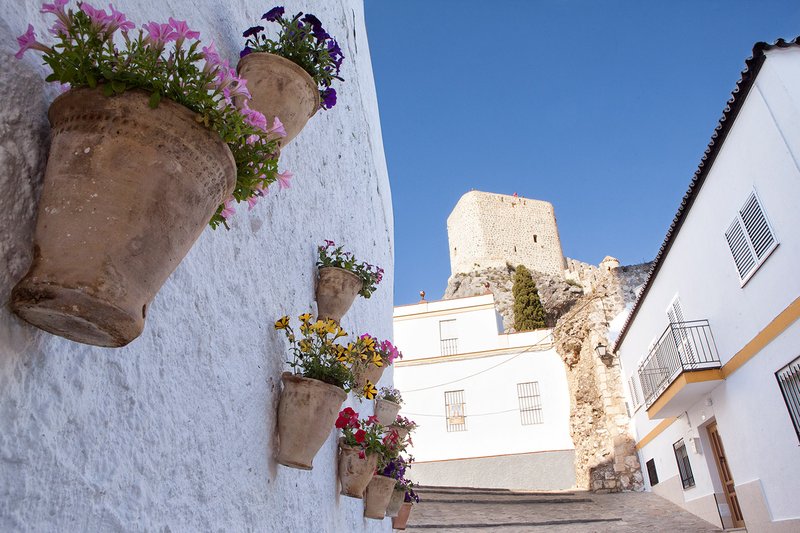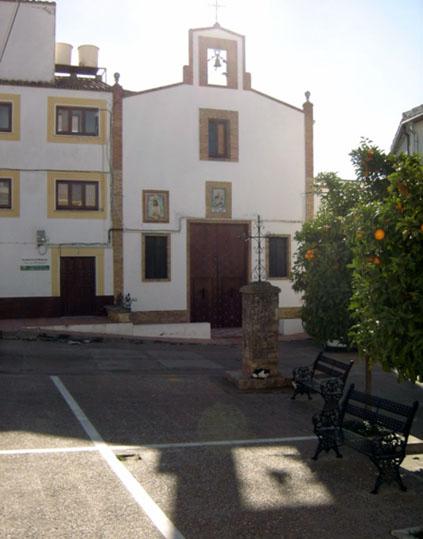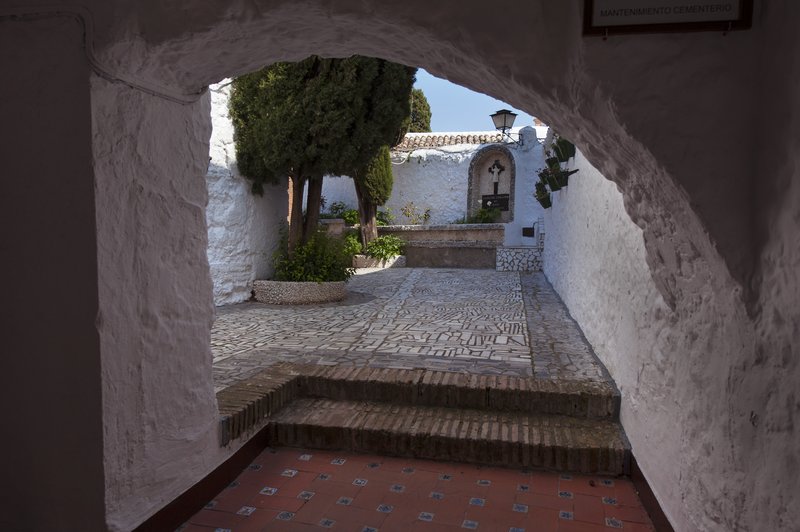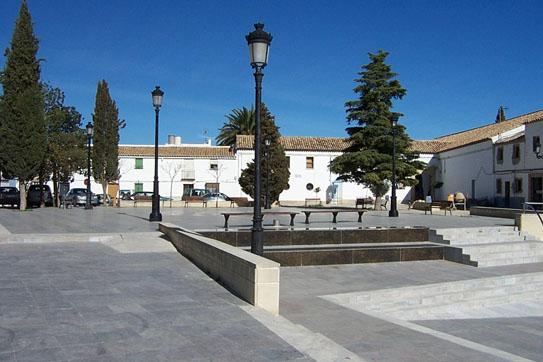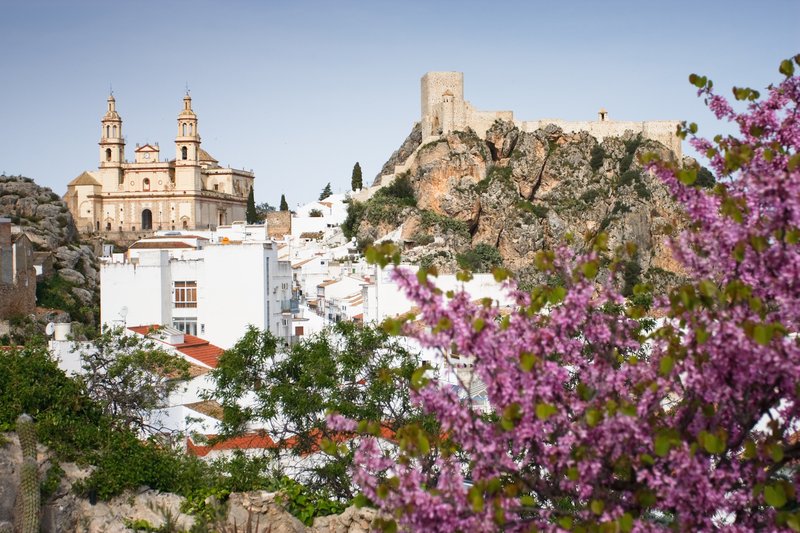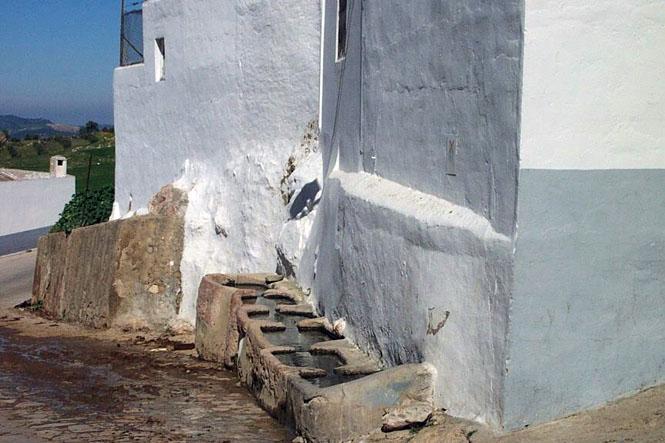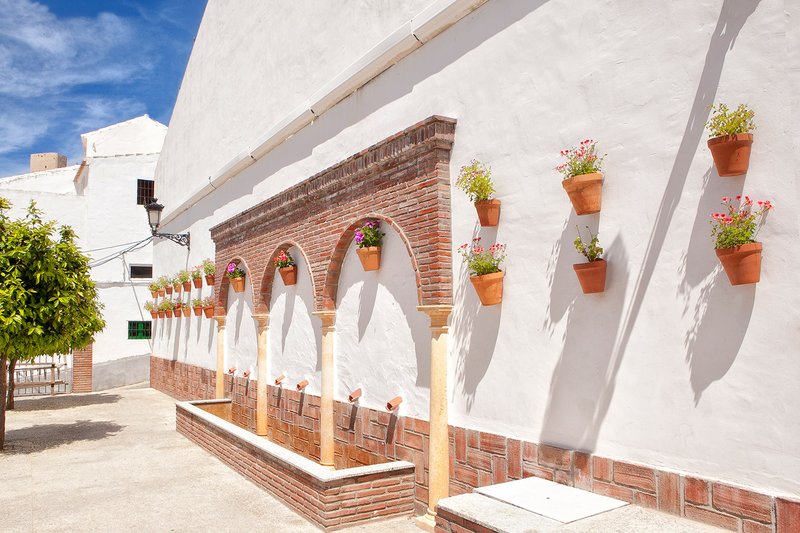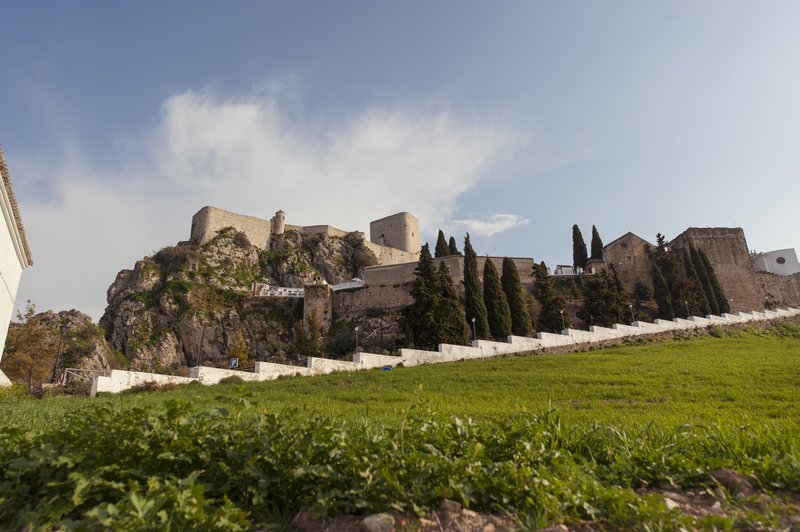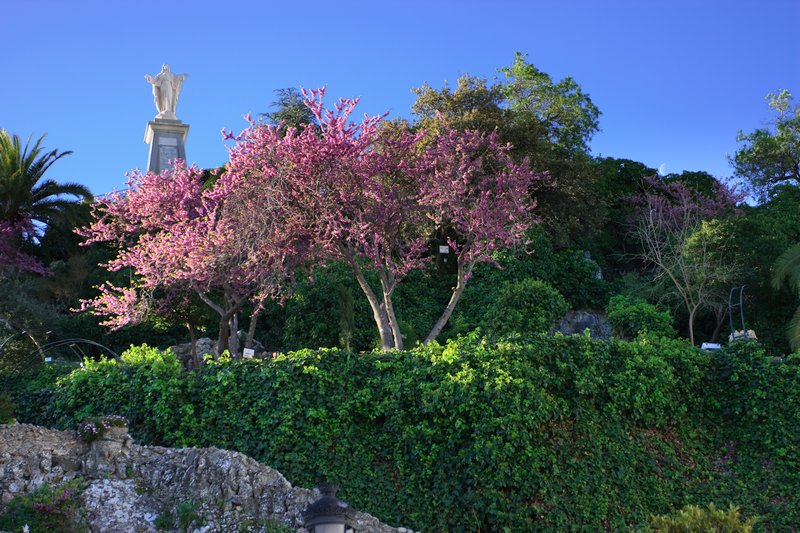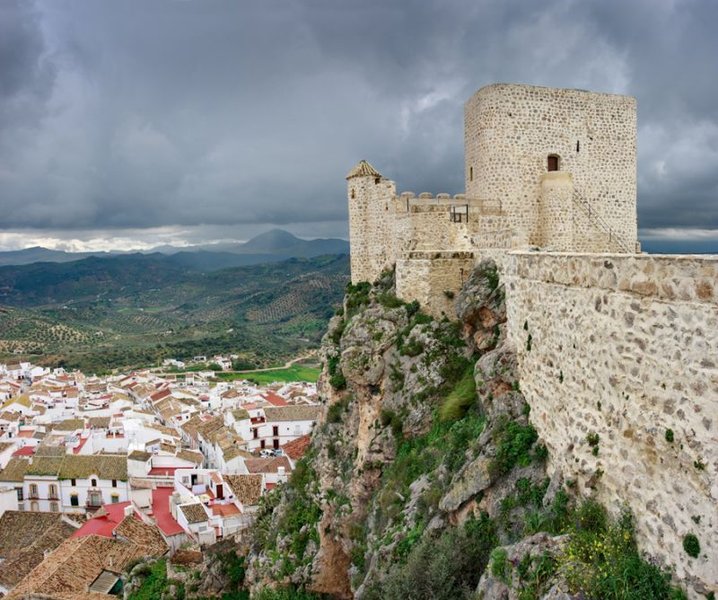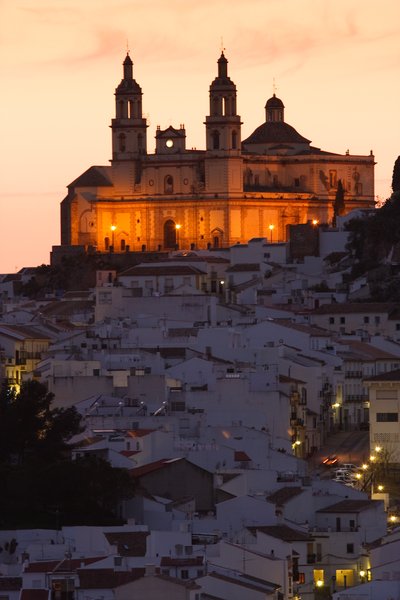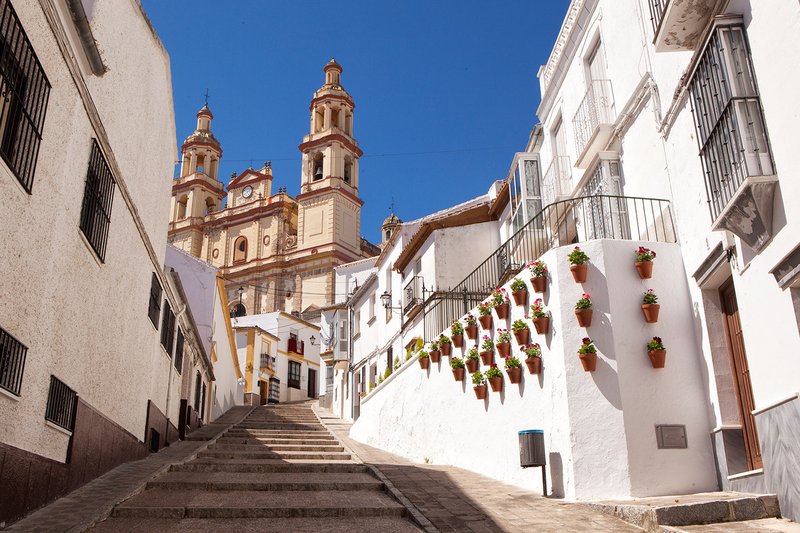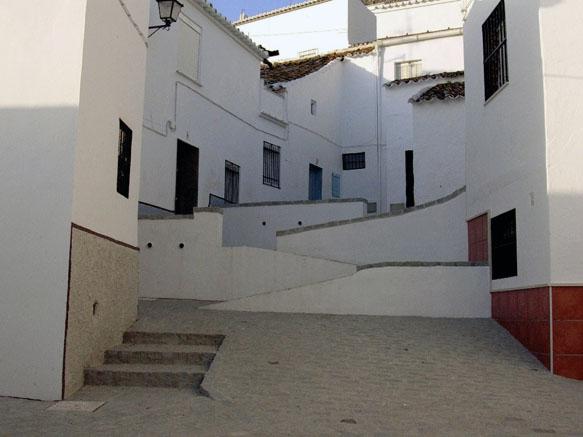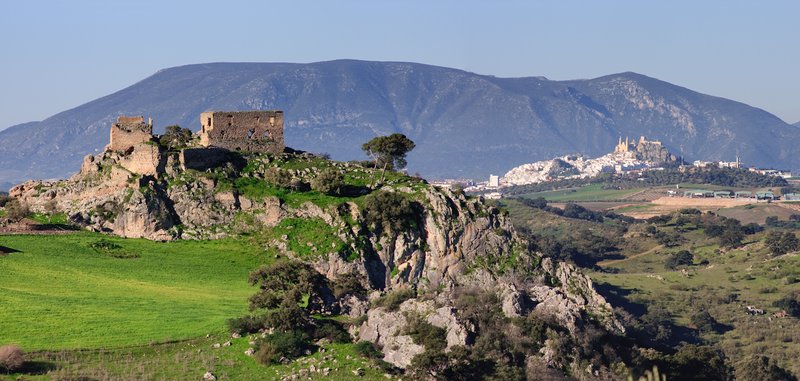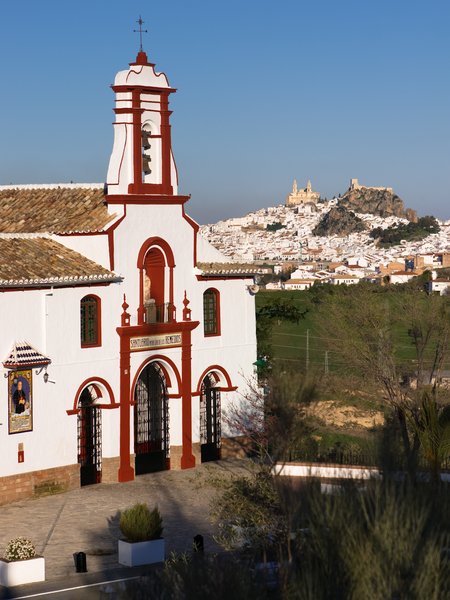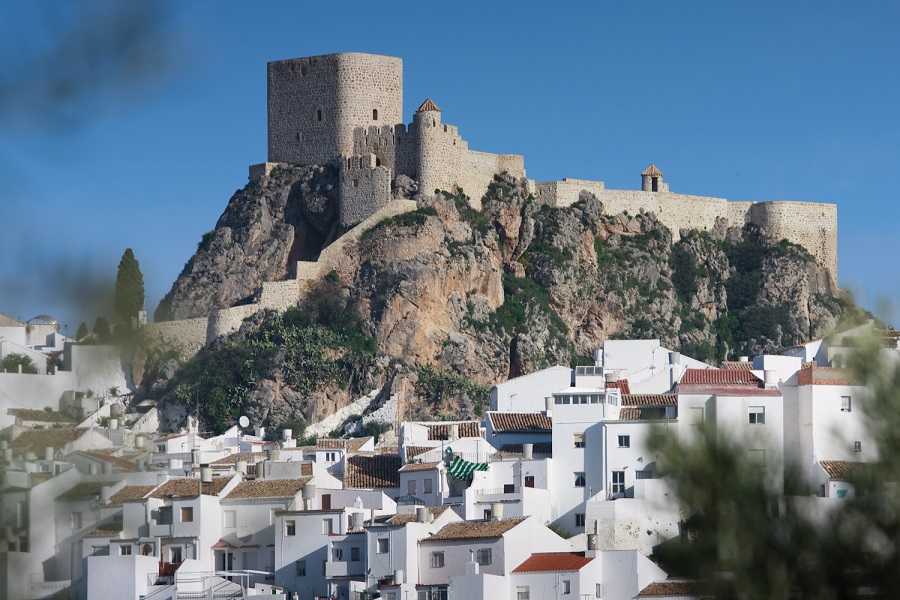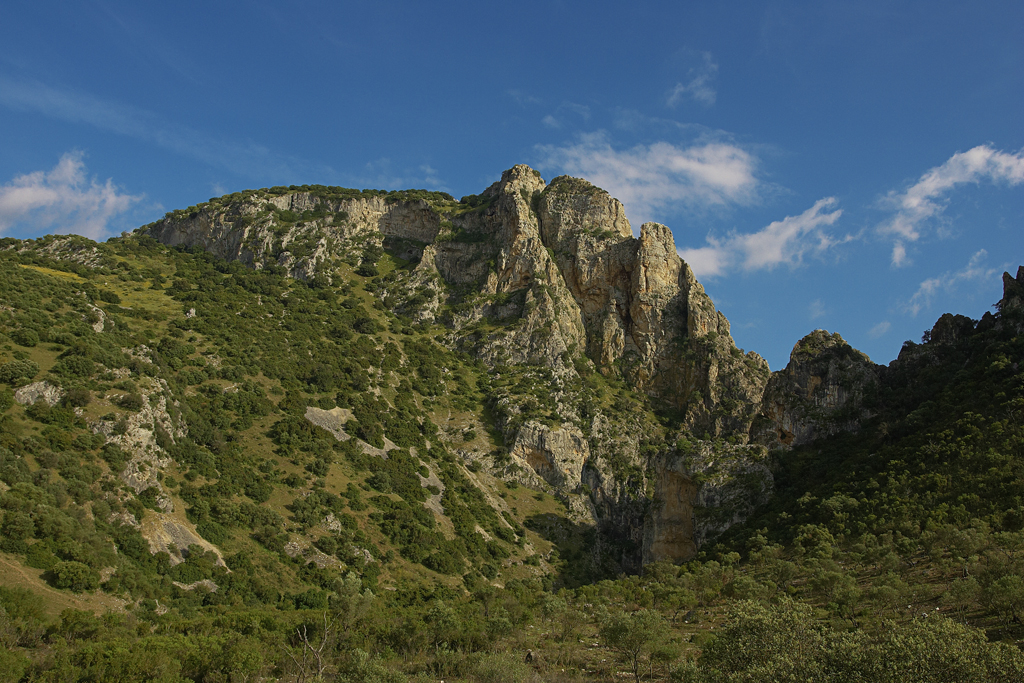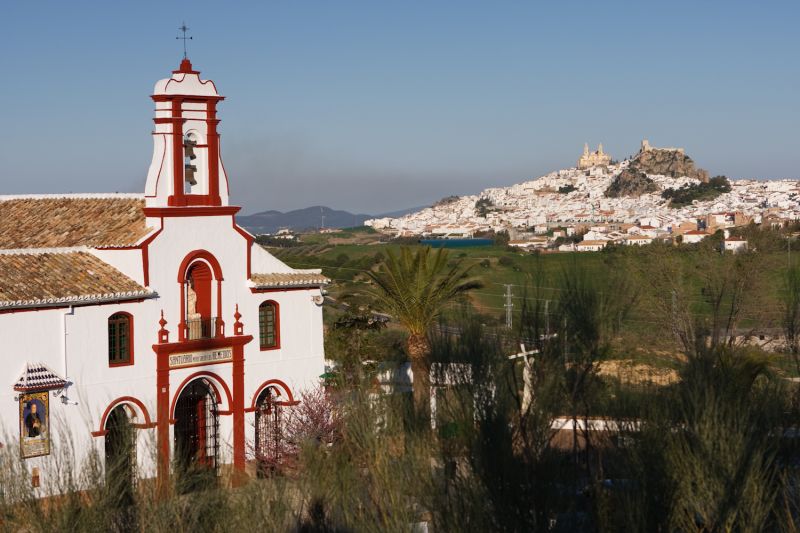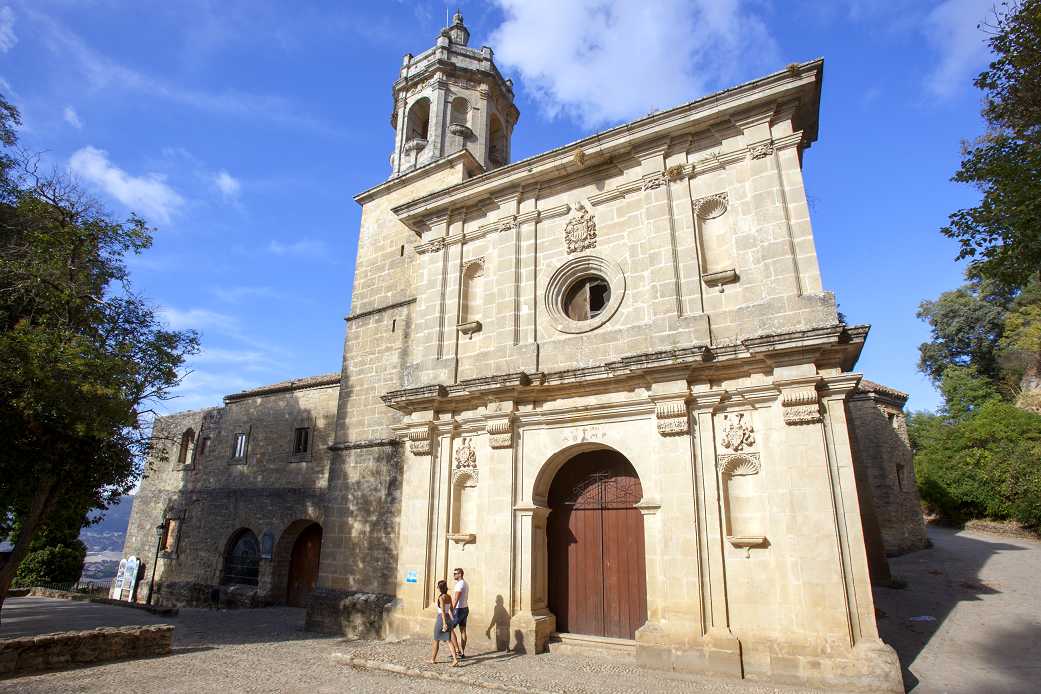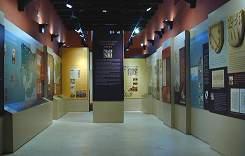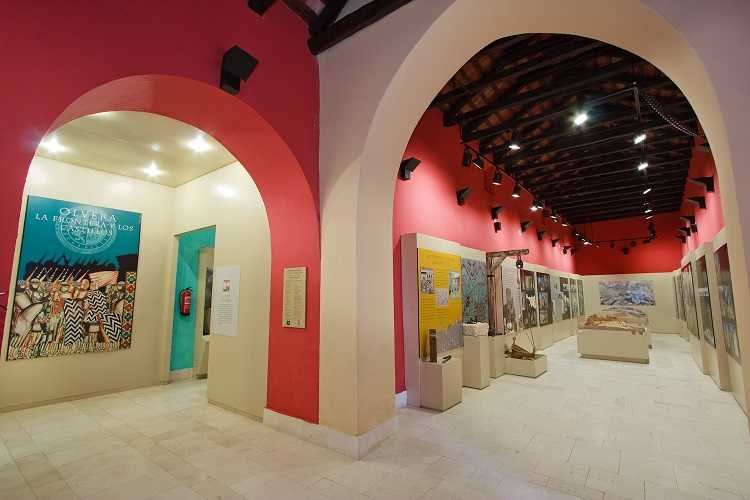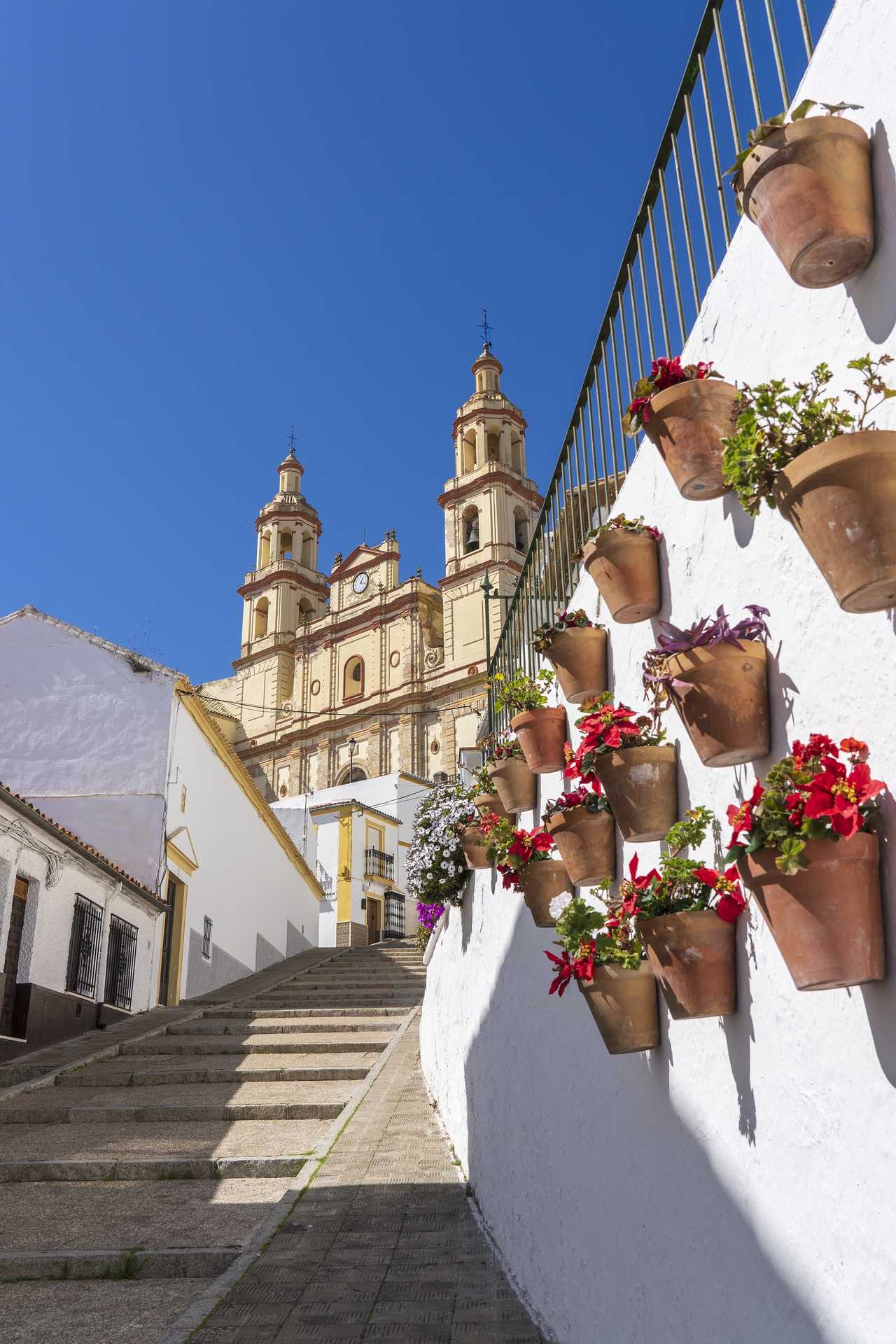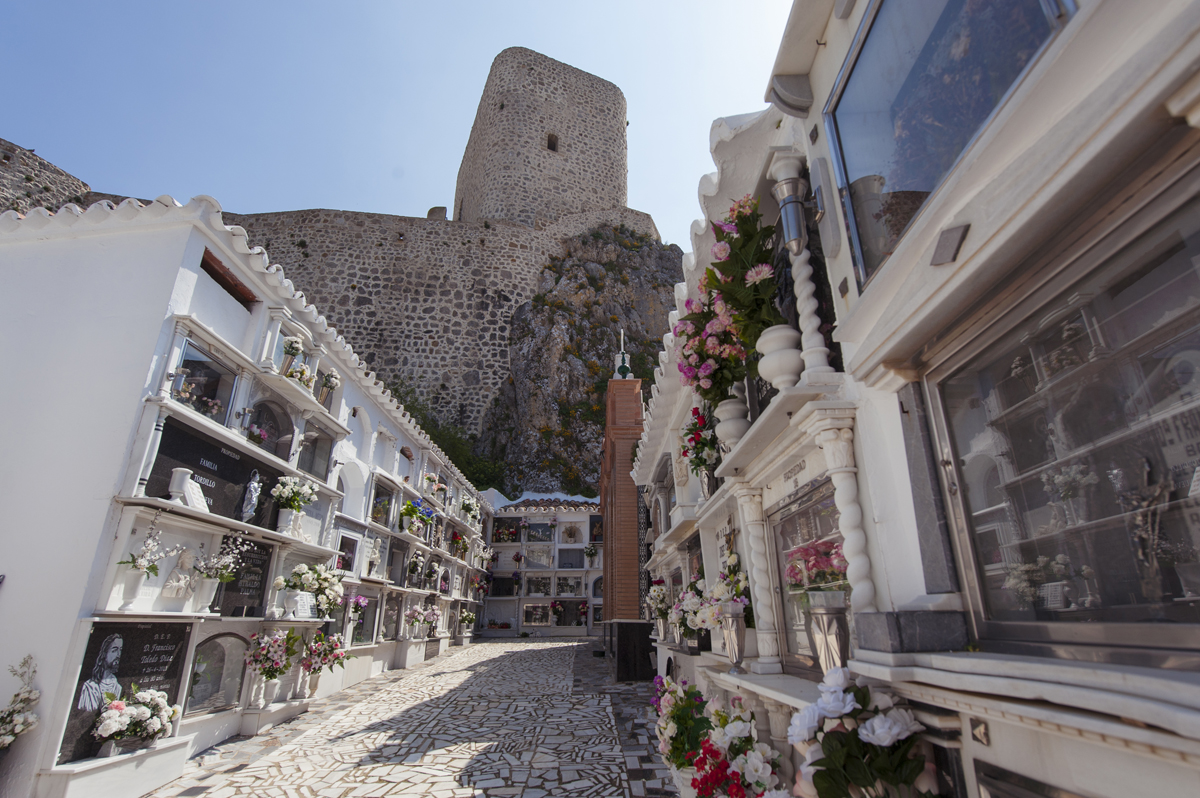Olvera
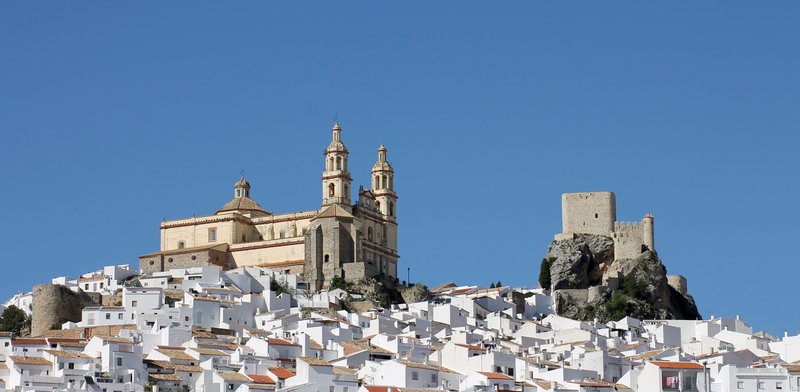
Located in the extreme north east of the Sistema Betico range, among gently rounded mountains and fields of cereals and olive trees. The highlight of this sierra is the Peñón de Zaframagón, declared a Nature Reserve, which is home to the largest concentration of tawny vultures to be found anywhere in Andalusia.
The town is one of the area's most important and dates back to Nazari times, having grown at the foot of a 12th-century Moslem fortress. It stretches across the mountainside, a mixture of stately homes and examples of popular architecture, all built in the typical style of the Andalusian white villages. Worthy of note are the Castle and Our Lady's Church.
History
Its origins are linked to the Roman town of Ilippa, hence the term "ilipense", by which the inhabitants of Olvera are known.
Menendez Pidal believes the origin of the name "Olvera" to be the Latin "ulva", while others subscribe to the theory that it comes from "Olivera", as the town is surrounded by olive trees.
The Moslems called it Wubira. The original settlement grew in the shelter of a large mediaeval fortress which occupied a strategic position in the area since it was part of the line of defences between the kingdom of Granada and Christian territory. Occupied by Alfonso XI's Christian troops in 1327, it later belonged to the Perez de Guzman estate and then to the Dukes of Osuna, who owned the Olvera until the 19th century.
The village played an important role in the War of Independence, as French troops billeted here were frequently attacked by groups of local guerrillas.
In 1877, King Alfonso XII awarded Olvera full village status.
It was declared a village of Historical and Artistic Importance in 1983.
Eminent citizens
Nicolas Ribera y Laredo, 15th century. An important military figure and the founder of the city of Lima.

- Max 15
- Min 14
- Max 59
- Min 57
- °C
- °F

